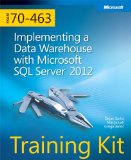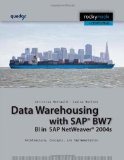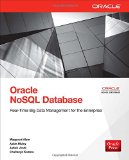Data Warehouse European command

Many applications refer to moving objects or phenomena and require spatio-temporal modelling and specific analysis. Unlike conventional data where attributes are simple values (numerical or textual), object motion defines a continue variation in space and time. This makes it difficult to handle such datasets, for instance, answering the query "how many objects cross a given area during a given time period?" This article addresses spatio-temporal data warehouse schema modelling in order to facilitate those queries and more generally, on-line analytical processing (OLAP) on spatio-temporal databases. It is illustrated on a space-time human activity survey database within the framework of a European IST project.
Traffic statsYou might also like

|
Training Kit (Exam 70-463): Implementing a Data Warehouse with Microsoft SQL Server 2012 (Microsoft Press Training Kit) Book (Microsoft Press)
|
Why Microsoft's SQL Server 2014 may threaten Oracle's leadership
— Market Realist
The combination of social, mobile, data analytics, and cloud (or SMAC) computing has led to unprecedented growth in data volumes. This growth in data volumes presents multiple challenges as well as opportunities.

|
Data Virtualization for Business Intelligence Systems: Revolutionizing Data Integration for Data Warehouses (The Morgan Kaufmann Series on Business Intelligence) Book (Morgan Kaufmann)
|

|
Data Warehouse and Business Intelligence Architecture Design eCourse Software (Ocean Software International, Inc.)
|

|
Data Warehousing with SAP BW7 BI in SAP Netweaver 2004s: Architecture, Concepts, and Implementation Book (Rocky Nook)
|

|
Oracle NoSQL Database: Real-Time Big Data Management for the Enterprise Book (McGraw-Hill Osborne Media)
|




